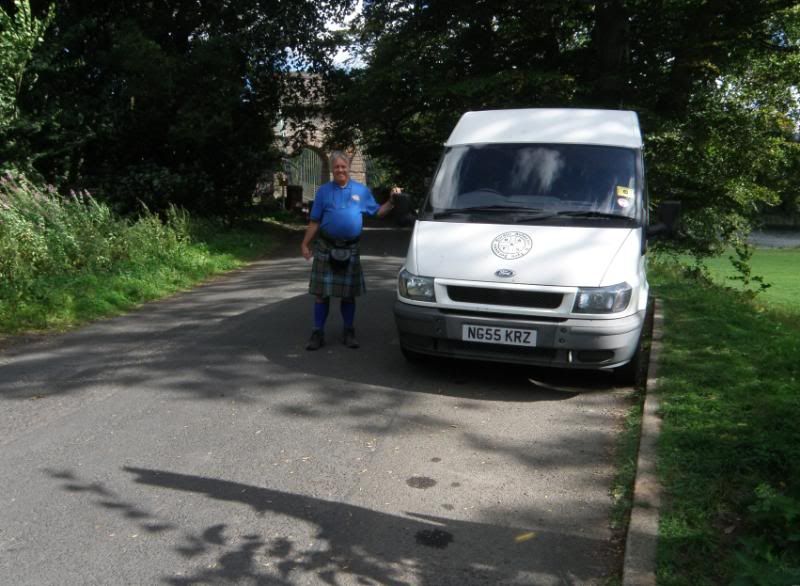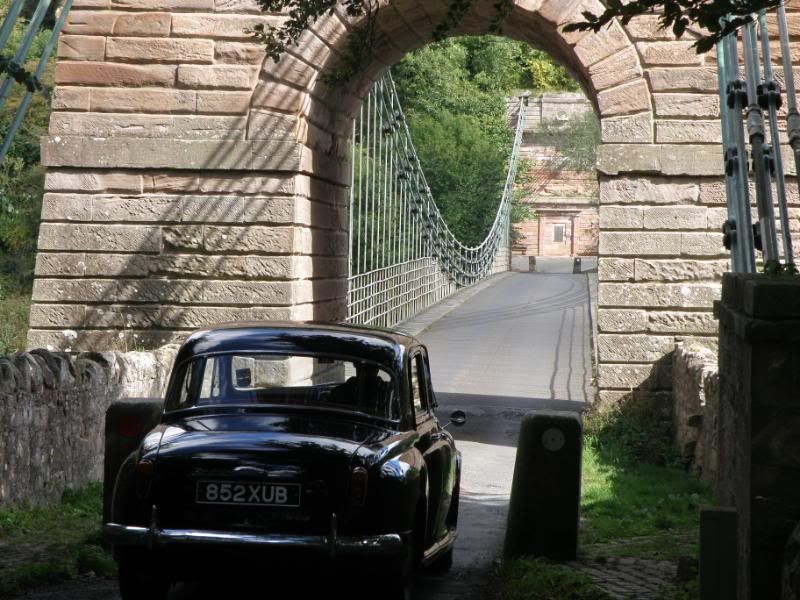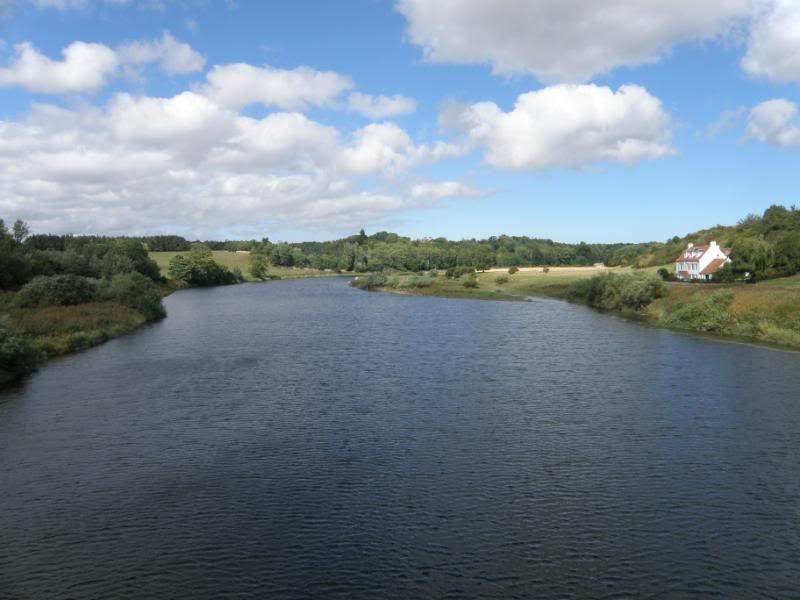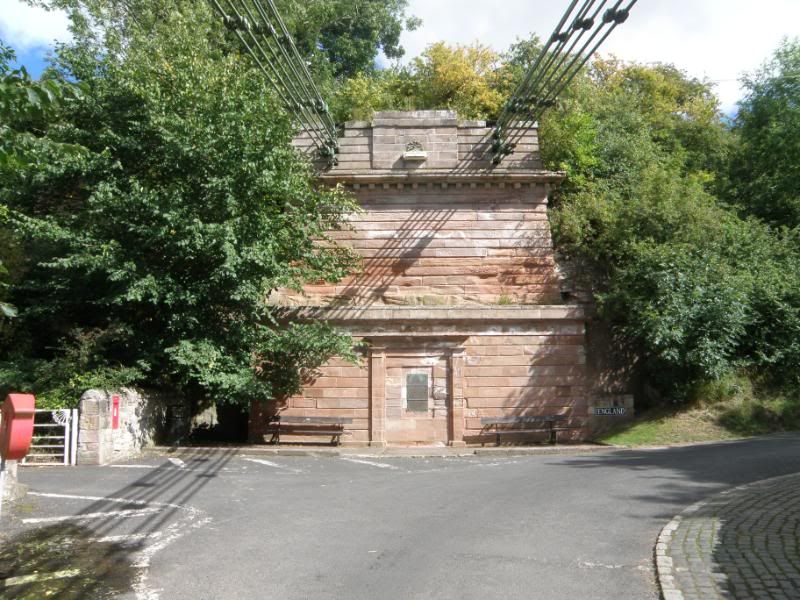On Sunday I went to a vintage rally at the Chain Bridge Honey Farm in Northumberland. Water had formed a natural defence against invasion for many centuries but following the Treaty of Union bridges were built to enable the development of trade. My planned crossing into England was via the Union Bridge over the River Tweed but on arrival there I found that my transport was too big for the bridge, the entrance arch of which can be seen in the background. As it was not far to my destination on the English side of the river I decided to walk from here, rather than take a lenghty detour via Coldstream or Berwick-on-Tweed.
A fifty year old Rover P4 series eases across the bridge on its way to the rally. The Union Bridge was designed by Captain S. Brown of the Royal Navy and was completed in 1820. The bridge deck is suspended from chains. There is a width restriction on vehicles of six feet six inches and a weight restriction of two tons. On the Scottish bank the chains are anchored to a tower which has an arch through it, while on the English bank the chains are anchored to a buttress which takes the form of an identical tower without the arch, behind which the ground rises steeply.
The view from the bridge. On the left bank of the river is Scotland where in the centre of the picture in the distance the roof of Paxton House, the residence of the Home Robertsons, can just be seen above the trees. The right bank of the river is England.
Arriving ashore in England, showing the English tower to which the bridge chains are anchored and which has no arch as the road takes a very sharp right turn where it is confronted by steeply rising ground.
More to follow shortly.



















Bookmarks